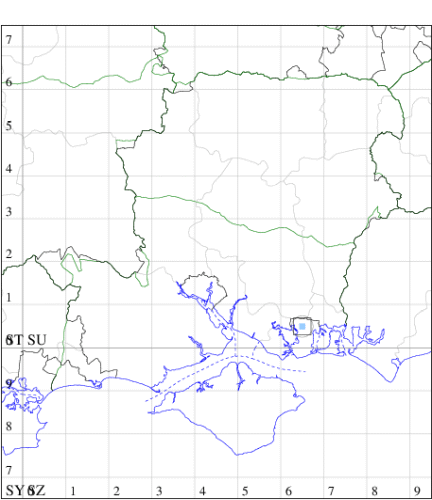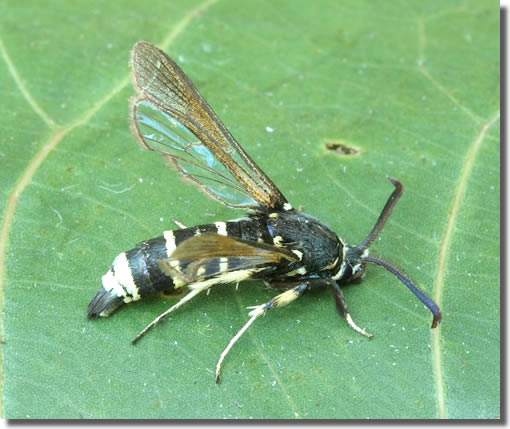Dusky Clearwing
Paranthrene tabaniformis
Checklist Number52.004 [B&F: 0372]
Verification
Record requires retention of specimen until confirmed, and may require dissection. Consult with CMR if unsure
Formerly considered extinct in the British Isles, having, until 2021, not been recorded since 1924, from Berkshire. However, in that year, P. tabaniformis was rediscovered at a site in Warwickshire, and in 2023 it was found in at least three new counties, from Cambridgeshire, Bedfordshire and Suffolk. All were to the TAB pheromone lure and it is almost certainly going to be found to be more widespread. Whether this perceived spread is real, or that the species has been present undiscovered for want of searching, is unclear, but the author feels that the latter is more likely.
A species of broad-leaved woodland where Aspen and poplar grows, the larvae feeding within the trunk. In Hampshire there is one old record, from Cosham in 1909, but not recorded from the Isle of Wight. Wingspan 26-34 mm. Day-flying. On the continent, feeding signs of the early stages may be sought during the winter months, but the advent of synthetic pheromone lures has made trapping the male moth a more reliable and easier method of monitoring for presence.
A species of broad-leaved woodland where Aspen and poplar grows, the larvae feeding within the trunk. In Hampshire there is one old record, from Cosham in 1909, but not recorded from the Isle of Wight. Wingspan 26-34 mm. Day-flying. On the continent, feeding signs of the early stages may be sought during the winter months, but the advent of synthetic pheromone lures has made trapping the male moth a more reliable and easier method of monitoring for presence.


VC11 South Hampshire
| Site | Date | Quantity | Recorder | Stage |
|---|---|---|---|---|
| Cosham (SU60) | 1909 | one | A E Burras | Adult |

